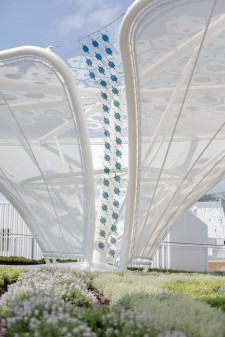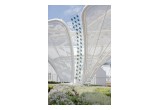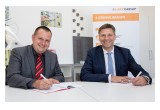New Connection Technology for Organic Photovoltaics

Stuttgart - Nuremberg, Germany, September 12, 2016 (Newswire.com) - The Lapp Group, a leading manufacturer of connection solutions, and BELECTRIC OPV, the market leader in organic photovoltaics (OPV), have concluded an agreement establishing a close partnership. Georg Stawowy, Member of the Board for Technology and Innovation at Lapp Holding AG, and Dr. Ralph Pätzold, CEO of BELECTRIC OPV, signed the contract at BELECTRIC OPV's production site in Kitzingen. The two companies will jointly develop new technologies for connection and cabling of flexible organic photovoltaic modules. The aim is to create a solution that is more versatile and suitable for any film materials. In addition, Module Access Points (MAP) - the contact point between the film and cable - are to be made more compact. This is important to integrate the OPV laminates unobtrusively into building facades, where they generate clean sun power. This will give designers and architects the greatest design freedom possible. "Development is already underway and should be completed with a product ready for series production in 2017", Reinhard Probst said, Market Manager Solar at the Lapp Group.
Long-standing partnership – The collaboration is nothing new for Lapp and BELECTRIC OPV, merely a continuation of a long-standing partnership. Lapp developed a MAP for BELECTRIC OPV, which was used in the solar modules for the German pavilion at Expo 2015 in Milan. The solar sculptures reached up to the sky like giant ferns, with the power fed into the cable through almost invisible connection points, which looked like fine tree branches on the leaves.
Thanks to the new system technology we can provide architects with a connection system that can be visually integrated into the overall look of a building, emphasising the key aesthetic advantages of OPV integration.
Hermann Issa, Director of Business Development
More flexible process planned – The process developed by Lapp is a big advance in the use of organic photovoltaics. The connection points in the Milan pavilion are exceptionally compact and waterproof. These properties are also saved for the new solution, but it will be significantly more flexible in terms of choice of material and thickness of the carrier film. It will also be possible to attach the connection point regardless of where the modules are produced, guaranteeing high flexibility in production.
Patented technology – The partners remain tight-lipped about how the whole thing will work in detail until the patent process has been initiated. The two companies want to maintain exclusive rights to this technology for a specified period. During this time, BELECTRIC OPV will obtain the MAPs from Lapp and Lapp will supply these products exclusively to BELECTRIC OPV. "We've known each other for a long time and have a great deal of trust in one another. At the Lapp Group we believe that organic photovoltaics is a future technology with huge potential", Georg Stawowy said. "The strategic partnership therefore was the next logical step."
"With this strategic cooperation with Lapp, we are consistently continuing on the path of industrializing organic photovoltaics", Ralph Pätzold added. "OPV cannot be compared to conventional PV technologies that are primarily defined by the modular concept. Therefore, and to fully tap into the uniqueness of OPV for customers, we are constantly focusing on the final overall system, which also includes the electrical system components. With Lapp we have a strong partner on our side with whom we want to further develop these components."
Further projects planned – The Lapp Group and BELECTRIC OPV are already planning further projects making use of the new process. One idea is to utilize existing surfaces better. "Thanks to the new system technology we can provide architects with a connection system that can be visually integrated into the overall look of a building, emphasizing the key aesthetic advantages of OPV integration", Hermann Issa said, Director of Business Development at BELECTRIC OPV. As well as integration into buildings, surfaces can be used that were never previously a focus - for example roofs, which could not be used in the past for static reasons. "Of course, this system is much lighter and its shape and, to some extent, color can easily be adapted to the building or the surroundings", Reinhard Probst said.
Source: BELECTRIC OPV GmbH


